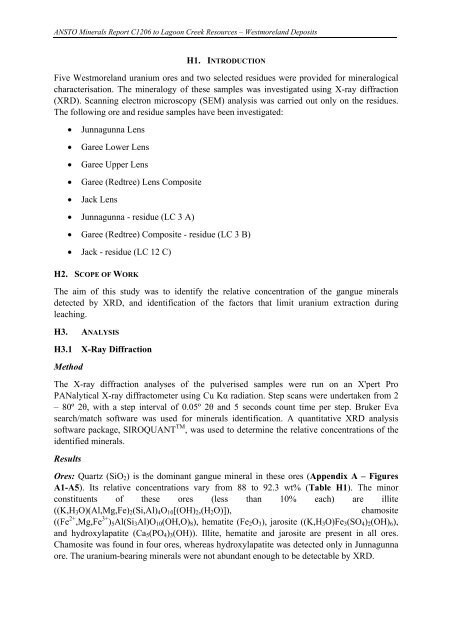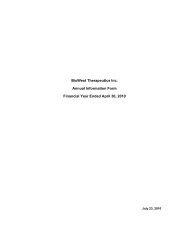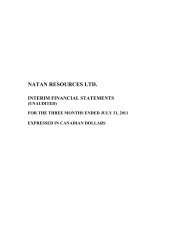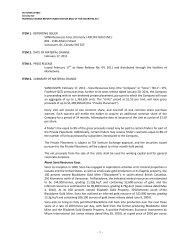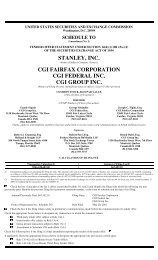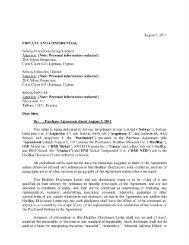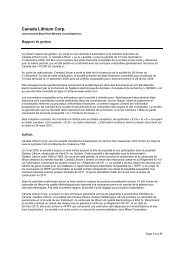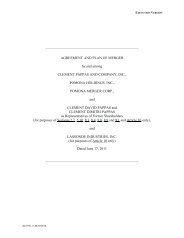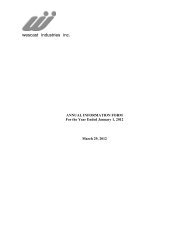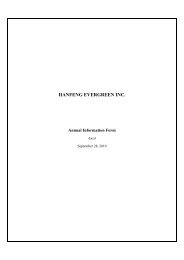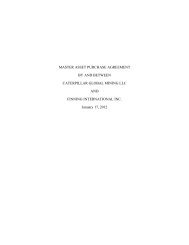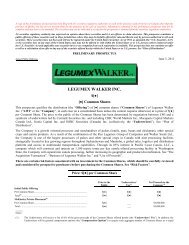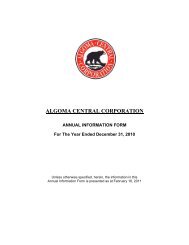Laterite Leach Tests
Laterite Leach Tests
Laterite Leach Tests
You also want an ePaper? Increase the reach of your titles
YUMPU automatically turns print PDFs into web optimized ePapers that Google loves.
ANSTO Minerals Report C1206 to Lagoon Creek Resources – Westmoreland Deposits<br />
H1. INTRODUCTION<br />
Five Westmoreland uranium ores and two selected residues were provided for mineralogical<br />
characterisation. The mineralogy of these samples was investigated using X-ray diffraction<br />
(XRD). Scanning electron microscopy (SEM) analysis was carried out only on the residues.<br />
The following ore and residue samples have been investigated:<br />
• Junnagunna Lens<br />
• Garee Lower Lens<br />
• Garee Upper Lens<br />
• Garee (Redtree) Lens Composite<br />
• Jack Lens<br />
• Junnagunna - residue (LC 3 A)<br />
• Garee (Redtree) Composite - residue (LC 3 B)<br />
• Jack - residue (LC 12 C)<br />
H2. SCOPE OF WORK<br />
The aim of this study was to identify the relative concentration of the gangue minerals<br />
detected by XRD, and identification of the factors that limit uranium extraction during<br />
leaching.<br />
H3. ANALYSIS<br />
H3.1 X-Ray Diffraction<br />
Method<br />
The X-ray diffraction analyses of the pulverised samples were run on an X'pert Pro<br />
PANalytical X-ray diffractometer using Cu Kα radiation. Step scans were undertaken from 2<br />
– 80º 2θ, with a step interval of 0.05º 2θ and 5 seconds count time per step. Bruker Eva<br />
search/match software was used for minerals identification. A quantitative XRD analysis<br />
software package, SIROQUANT TM , was used to determine the relative concentrations of the<br />
identified minerals.<br />
Results<br />
Ores: Quartz (SiO2) is the dominant gangue mineral in these ores (Appendix A – Figures<br />
A1-A5). Its relative concentrations vary from 88 to 92.3 wt% (Table H1). The minor<br />
constituents of these ores (less than 10% each) are illite<br />
((K,H3O)(Al,Mg,Fe)2(Si,Al)4O10[(OH)2,(H2O)]), chamosite<br />
((Fe 2+ ,Mg,Fe 3+ )5Al(Si3Al)O10(OH,O)8), hematite (Fe2O3), jarosite ((K,H3O)Fe3(SO4)2(OH)6),<br />
and hydroxylapatite (Ca5(PO4)3(OH)). Illite, hematite and jarosite are present in all ores.<br />
Chamosite was found in four ores, whereas hydroxylapatite was detected only in Junnagunna<br />
ore. The uranium-bearing minerals were not abundant enough to be detectable by XRD.


